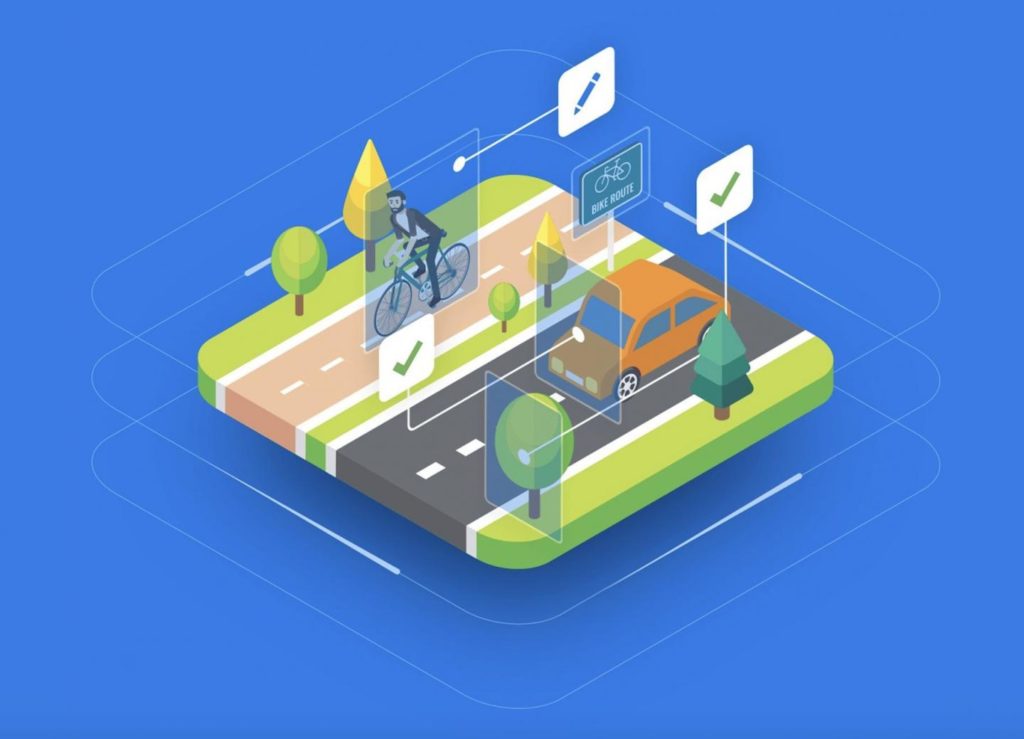
Using processed images, algorithms learn to recognize the real environment for autonomous driving. Source: understand.ai
Autonomous cars must perceive their environment accurately to move safely. The corresponding algorithms are trained using a large number of image and video recordings. Single image elements, such as a tree, a pedestrian, or a road sign must be labeled for the algorithm to recognize them. Understand.ai is working to improve and accelerate this labeling.
Understand.ai was founded in 2017 by computer scientist Philip Kessler, who studied at the Karlsruhe Institute of Technology (KIT), and Marc Mengler.
“An algorithm learns by examples, and the more examples exist, the better it learns,” stated Kessler. For this reason, the automotive industry needs a lot of video and image data to train machine learning for autonomous driving. So far, most of the objects in these images have been labeled manually by human staffers.
“Big companies, such as Tesla, employ thousands of workers in Nigeria or India for this purpose,” Kessler explained. “The process is troublesome and time-consuming.”
Accelerating training at understand.ai
“We at understand.ai use artificial intelligence to make labeling up to 10 times quicker and more precise,” he added. Although image processing is highly automated, final quality control is done by humans. Kessler noted that the “combination of technology and human care is particularly important for safety-critical activities, such as autonomous driving.”
The labelings, also called annotations, in the image and video files have to agree with the real environment with pixel-level accuracy. The better the quality of the processed image data, the better is the algorithm that uses this data for training.
“As training images cannot be supplied for all situations, such as accidents, we now also offer simulations based on real data,” Kessler said.
Although understand.ai focuses on autonomous driving, it also plans to process image data for training algorithms to detect tumors or to evaluate aerial photos in the future. Leading car manufacturers and suppliers in Germany and the U.S. are among the startup’s clients.
The startup’s main office is in Karlsruhe, Germany, and some of its more than 50 employees work at offices in Berlin and San Francisco. Last year, understand.ai received $2.8 million (U.S.) in funding from a group of private investors.
 Keynotes | Speakers | Exhibitors | Register
Keynotes | Speakers | Exhibitors | Register
Building interest in startups and partnerships
In 2012, Kessler started to study informatics at KIT, where he became interested in AI and autonomous driving when developing an autonomous model car in the KITCar students group. Kessler said his one-year tenure at Mercedes Research in Silicon Valley, where he focused on machine learning and data analysis, was “highly motivating” for establishing his own business.
“Nowhere else can you learn more within a shortest period of time than in a startup,” said Kessler, who is 26 years old. “Recently, the interest of big companies in cooperating with startups increased considerably.”
He said he thinks that Germany sleepwalked through the first wave of AI, in which it was used mainly in entertainment devices and consumer products.
“In the second wave, in which artificial intelligence is applied in industry and technology, Germany will be able to use its potential,” Kessler claimed.